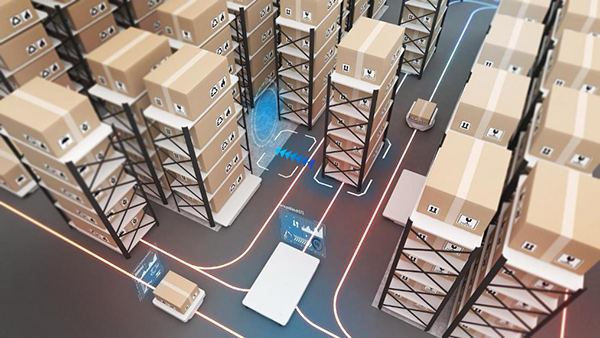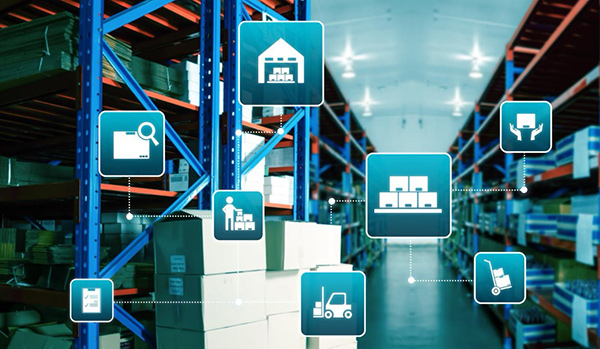Why distributed warehousing is redefining order speed.
As consumer expectations for near-instant delivery intensify, supply-chain leaders are rethinking warehousing’s geography. Many brands and retailers are already evaluating 3pl fulfillment services in Florida, strategic moves toward regional hubs, to position inventory closer to customers. This shift is part of a larger transformation: edge logistics, the decentralization of distribution networks to improve responsiveness, resilience, and cost efficiency.
In this article, we examine the forces driving distributed warehousing, the operational architecture of edge networks, the trade-offs to manage, and why brands that don’t adapt risk falling behind in the logistics arms race of 2026.
Several converging trends make edge logistics not a novelty but a necessity:
Global Trade Magazine projects the warehousing and distribution logistics market will surpass USD 25 trillion by 2032, with growth driven by the need for flexible, responsive networks.
Edge logistics describes a model where inventory, fulfillment, and even decision-making are distributed across multiple smaller nodes instead of centralized mega-warehouses. It’s about bringing the edge of your supply chain closer to customer clusters rather than shipping every order across the country.
The shift toward distributed warehousing is redefining competitiveness in logistics. By positioning inventory closer to customer hubs, brands dramatically cut transit times and zone surcharges, meeting tighter delivery windows without relying on costly express shipping. Faster delivery not only enhances customer satisfaction but also boosts conversion rates and repeat orders, making speed a core profit driver rather than an expense.
Equally crucial is resilience. In centralized models, a single disruption can paralyze an entire network. Edge logistics distributes that risk: when one node falters, others can quickly compensate. This flexibility keeps orders moving and maintains consumer trust even during supply chain turbulence.
The model also streamlines the last mile, historically the most expensive and inefficient stage of fulfillment. Shorter delivery routes mean fewer empty miles, lower emissions, and better fleet utilization. At the same time, localized data enables smarter inventory placement. Brands can align stock with real regional demand, improving turnover, freeing capital, and reducing waste.
From a commercial standpoint, edge networks also unlock marketing agility. With inventory already near customers, companies can launch regional promotions or product drops instantly, strengthening both responsiveness and brand relevance.
Finally, distributed logistics advances sustainability goals. Smaller, strategically placed facilities and shorter transport routes reduce energy use and emissions, aligning operational efficiency with environmental responsibility.
In essence, edge logistics combines speed, reliability, and sustainability into a single operating advantage, one that modern brands can no longer afford to ignore.

The retailer expanded through edge nodes in Los Angeles, Florida, Boston, Chicago, and Dallas. Regional inventory accuracy jumped from 23% to 63%, while transit times dropped by nearly one day.
Consumer brands now deploy automated micro-warehouses inside cities to achieve sub-hour delivery.
With urban space limited, multi-story and adaptive-use warehouses are surging.
Together, these cases demonstrate that distributed warehousing has evolved from concept to competitive standard.

Evaluating an edge logistics network requires more than anecdotal feedback, it demands data that captures both operational efficiency and customer impact. A core metric is order lead time, which tracks how quickly purchases move from checkout to delivery. A shorter lead time indicates that distributed warehousing is fulfilling its promise of faster, more responsive operations.
Equally telling is zone-charge reduction, showing whether regional inventory placement is truly lowering long-haul costs. Node utilization rates then reveal how evenly capacity is distributed across the network, ensuring warehouses aren’t sitting idle or straining under excess volume.
Performance also hinges on forecasting accuracy. Monitoring the regional stock-out rate helps identify where demand planning or replenishment models fall short. Meanwhile, inter-node transfer costs highlight the efficiency of internal logistics, excessive transfers usually point to poor orchestration or uneven demand.
Financially, inventory velocity and turns reflect how effectively working capital is being used across multiple locations, while Net Promoter Scores (NPS) by region translate logistics performance into customer perception.
Together, these indicators provide a full picture of network health. By comparing them against centralized benchmarks, companies can confirm that the added complexity of edge logistics is paying off, not just in speed, but in smarter, leaner, and more reliable fulfillment.
Edge implementation is an iterative journey—successive optimization beats over-planning.
By 2026, the battle for customer satisfaction will be fought on the metric of latency. As consumers normalize one-day delivery, brands that master edge logistics will win trust, share, and margin.
Those clinging to centralized models will face rising costs and slower cycle times. Edge logistics levels the playing field: with regionalized fulfillment partners and smart orchestration, even midsize brands can rival enterprise-grade speed.
Edge logistics isn’t simply another supply-chain trend. It is the new operational standard for agile, resilient, customer-centric commerce, and it’s already reshaping how products move, warehouses function, and customers decide whom to trust.
In this episode, I sat down with Beejan Giga, Director | Partner and Caleb Emerson, Senior Results Manager at Carpedia International. We discussed the insights behind their recent Industry Today article, “Thinking Three Moves Ahead” and together we explored how manufacturers can plan more strategically, align with their suppliers, and build the operational discipline needed to support intentional, sustainable growth. It was a conversation packed with practical perspectives on navigating a fast-changing industry landscape.